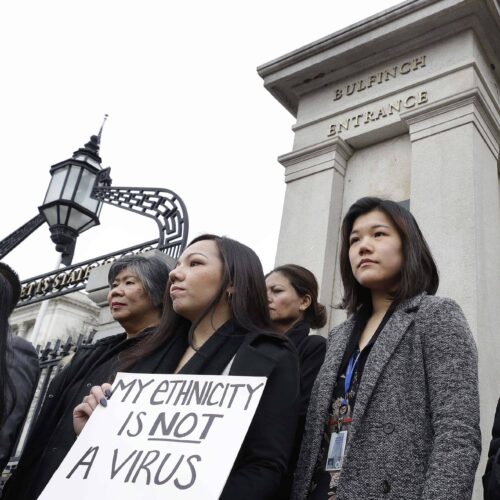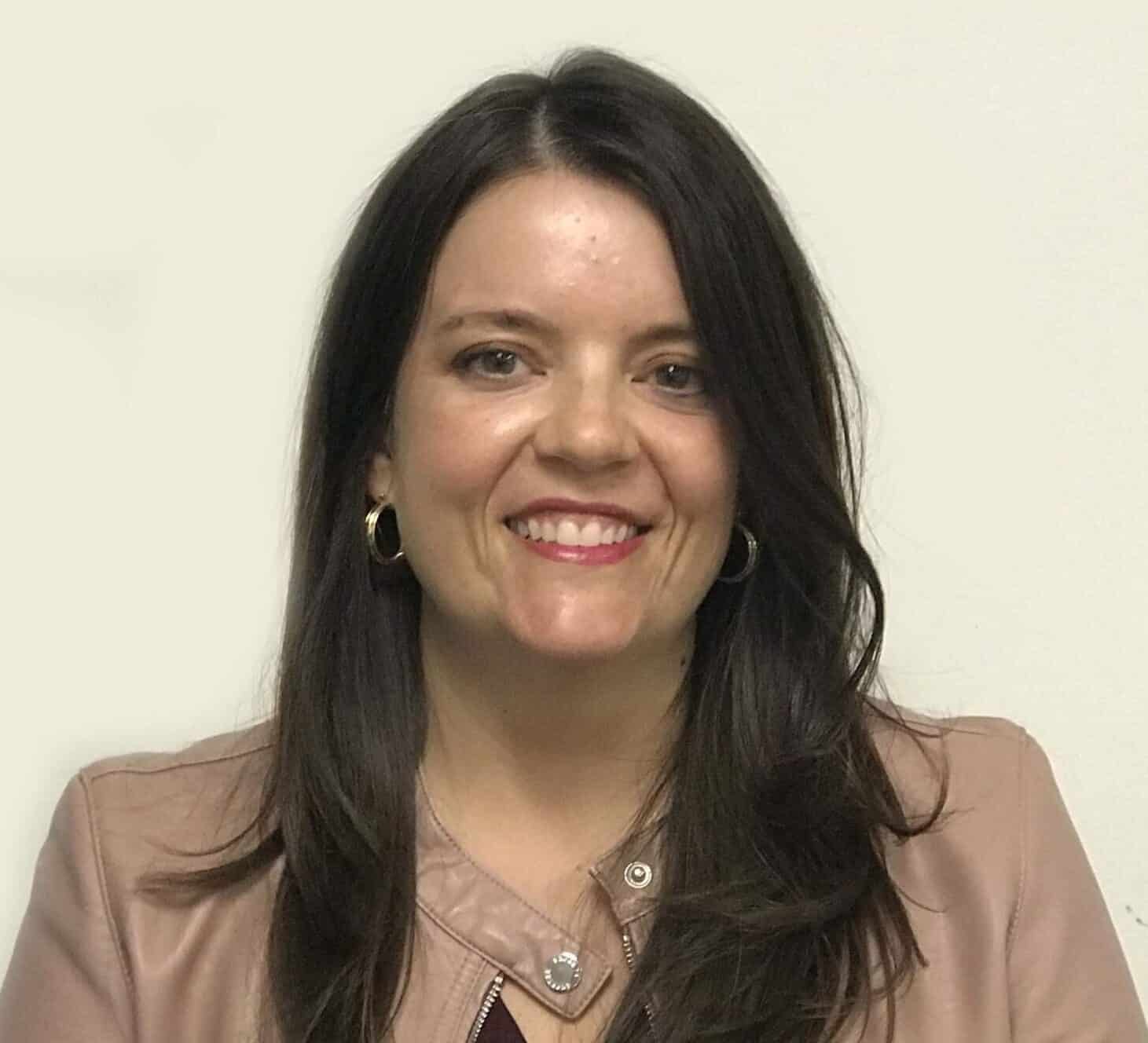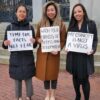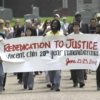This article was published in partnership with NBC News.
Introduction
Subscribe on Google | Apple Podcasts | Spotify | Amazon
The first time it happened was March 7, shortly after New York Gov. Andrew Cuomo announced a state of emergency. Eddie Song and his wife were shopping at a Costco in New York City when a man told him that Asians caused COVID-19 and that Song didn’t deserve a shopping cart.
“If you don’t give it to me, I will punch you in the face,” the man said. Song refused loudly, and the man backed off.
About a week later, Song was riding in a Manhattan office elevator when another stranger told him that people didn’t want “your kind” in there.
“These things are happening daily — it’s getting a lot more dangerous,” said Song, a 41-year-old entrepreneur who now wears a GoPro camera when he goes outside so he can quickly record incidents. “The most diverse city in the world has digressed to this behavior.”
Researchers are reporting an alarming surge in anti-Asian racism related to COVID-19 that started more than two months ago. From Koreatown in Los Angeles to Greenwich Village in New York City, Asians have been harassed, pushed, spit upon and attacked under the false assumption that they are to blame for the deadly coronavirus. A teenager recently kicked a 59-year-old Asian man in New York City, and a man stabbed two Asian American children and their father at a Sam’s Club in Texas, an incident the FBI called a hate crime. The FBI has said Asian Americans could potentially experience an increase in these types of crimes, according to documents obtained by ABC. And the Asian Pacific Policy and Planning Council and its partners have received more than 1,500 reports of anti-Asian hate incidents since mid-March.
The Trump administration has done little to stop the backlash. Asian American advocacy groups say the Justice Department had a briefing call with them on Monday — the first outreach by the agency on the matter to at least some of those groups. It came only after the Center for Public Integrity began asking about its response.
Neither the Justice Department nor the Centers for Disease Control and Prevention have announced efforts to prevent the public targeting of Asians, which ranges from bias incidents to hate crimes. Both agencies were quick to act in similar situations: the CDC during the 2003 severe acute respiratory syndrome outbreak and the Justice Department after the 9/11 terrorist attacks.
On Friday, a dozen Democratic senators sent a letter to the U.S. Commission on Civil Rights, urging the independent federal agency to issue guidance on how the government should respond.
“There has not been a concerted effort from federal agencies to prevent and address anti-Asian sentiment related to the COVID-19 pandemic,” wrote the senators, including Elizabeth Warren of Massachusetts, Tammy Duckworth of Illinois and Kamala Harris of California.
The CDC did not respond to requests for comment. A spokesperson for the Justice Department referred Public Integrity to an op-ed published Thursday in The Washington Examiner by the head of the civil rights division.
“The Justice Department will prosecute hate crimes and violations of anti-discrimination laws against Asian Americans, Asians, and others to the fullest extent of the law,” wrote Assistant Attorney General Eric Dreiband.
The agency did not say whether it had a detailed plan to counteract the racist backlash, as it did after 9/11.
“I haven’t seen anything,” said Stewart Kwoh, founder of Asian Americans Advancing Justice – Los Angeles. “We haven’t heard anything from … any of the federal agencies that they will be of assistance in tackling the problem. … If they really are serious about it, they are going to have to have a major outreach campaign.”
A Public Integrity analysis also found a gap between what’s been reported through official channels and unofficial ones. While many of the cases reported to nonprofit groups do not constitute hate crimes, advocacy groups and media have reported numerous cases of physical assault and vandalism. And yet, among the largest cities, only one, New York, said it was investigating more than a single hate crime related to COVID-19. Experts say that this may be a symptom of a persistent failure of law enforcement to capture and investigate hate crimes.

For his part, Song said he didn’t initially report the incidents to police because he didn’t think it would make a difference. He’s also skeptical that the federal government will do anything about the broader problem.
Public Integrity spoke to nearly two dozen Asian American advocates, academics, government officials and harassment victims, and their suggestions about how to respond to the backlash varied. Some said that Asians need to videotape and report the incidents, or that bystanders should intervene. Some said Congress must strengthen hate crime laws, or that President Donald Trump — who has been criticized for stoking such bias by referring to the coronavirus as “the Chinese virus” — needs to create a task force at the Justice Department to tackle hate crimes against Asians.
What they agree on is this: Racism against Asians will only get worse as the death toll from the coronavirus continues to climb, and it’s making people fear for their lives.
The CDC and the DOJ know what to do
Outbreaks of infectious diseases have long inflamed racism and xenophobia in the United States. In 1900, for example, officials in San Francisco forced Chinese immigrants into quarantine during an outbreak of bubonic plague that arrived from Hong Kong, while a 1993 epidemic of hantavirus in the Southwest was described by journalists as a Navajo disease, leading to discrimination against Native Americans in the region.
In 2003, something similar happened during the SARS outbreak. The virus was first detected in China and spread to Europe, Canada and the U.S., infecting more than 8,000 people across the world and killing more than 700. Only eight people tested positive for the virus in the U.S., and none died. But that didn’t stop the barrage of alarming headlines about the rapid spread of the disease — news reports often accompanied by images of Asians wearing masks.
Subway riders in major cities began to avoid Asian passengers. Consumers stayed away from Chinese restaurants and shops. The stigma and hostility toward East Asians were so concerning that the CDC launched a 14-member community outreach team in response — in the same week the agency reported the first five confirmed cases of SARS in the U.S.
While other CDC response teams handled lab investigations, disease surveillance and infection control, the outreach team focused on documenting, monitoring and easing fear and discrimination related to the outbreak.
Within a month, the outreach team had organized group discussions with key leaders in the Asian American community, monitored Asian-language newspapers and websites, conducted community visits and led panel discussions. The team later analyzed more than 4,000 calls to the CDC’s public hotline to spot trends.
About 10 percent of those calls came from people afraid of contracting SARS from Asian co-workers, Asian-owned businesses and products made in China. That allowed the CDC to figure out which cities to focus on and what myths and rumors to dispel through targeted messaging. The team ended up meeting with about 500 Asian American community members in seven cities.
“As we prepare for the next new or re-emerging disease outbreak, we should also be preparing to deal with the fear epidemic that will likely accompany it,” Bobbie Person, a behavioral scientist at the CDC, wrote in a 2004 report.
It’s unclear if the CDC remembers that lesson. The agency has not announced similar efforts for COVID-19, far deadlier and more contagious than SARS, and did not respond to multiple requests by Public Integrity to explain if it is working on any. The first coronavirus case in the U.S. was confirmed Jan. 21 — nearly three months ago.
The 9/11 terrorist attacks also set off a wave of hate incidents against Asians. Two days after the attacks, a man tried to torch cars in the parking lot of a Seattle mosque and then fired a gun at worshippers. That same day, someone set a Pakistani-American restaurant on fire in Salt Lake City.
The Justice Department — the country’s top law enforcement agency — came up with a three-pronged response right away.
First, leaders of the agency’s civil rights division asked public officials to make clear that Arab, Muslim, Sikh and South Asian Americans are Americans, too, and that hate crimes and discrimination against them would not be tolerated. President George W. Bush, a Republican, and his attorney general and FBI director immediately issued such statements.
The second part of the plan: an outreach program to the affected communities. Within a few months of the attacks, Justice Department officials had attended more than 100 meetings and events with leaders from the Arab, Muslim, Sikh, and South Asian communities.
The agency also coordinated civil rights enforcement, working with the Equal Employment Opportunity Commission, for example, to file lawsuits related to job discrimination against Arabs and Muslims.
We can’t do this work without your support.
One of the people who helped spearhead the effort was Jim Zogby, head of the Arab American Institute in Washington, D.C. He started to receive death threats a day after the terrorist attacks and was surprised to see the Justice Department take them seriously. The FBI arrested three men in connection with the threats; all three went to prison. Zogby said he helped organize the monthly meetings between federal law enforcement agencies and community leaders.
“Did the department make the problem get better and go away? The answer is no,” Zogby said. “But in terms of establishing relationships that proved helpful to some of the groups, in terms of creating a path forward, it was productive.”
Another key figure at those meetings was Amardeep Singh, who co-founded the Sikh Coalition. At the time, followers of Sikhism were often mistaken for Muslims because of their turbans, and they were victimized, too.
Singh, now at the Open Society Foundations, said the Justice Department’s efforts were “tremendous” when it came to prosecuting job discrimination, school bullying and hate crimes — but the FBI racially profiled and surveilled Arabs and Muslims, creating major distrust between those groups and federal law enforcement. Still, Singh said, at least the message coming from the Bush administration was that Americans must not discriminate.
That’s not the message coming from the Trump administration, Singh said. “Instead, the president is stoking anti-Asian sentiment by blaming China for the virus, and it’s encouraging a climate of hate crimes, a climate of suspicion and fear,” he said.
In addition to using the “Chinese virus,” Trump has said he didn’t mind that a White House staffer reportedly called it the “Kung Flu.”
The Justice Department hasn’t announced targeted efforts to combat discrimination and violence against Asians over COVID-19. The agency did not tell Public Integrity what, if anything, it is doing about the problem.
At least one federal agency said it’s taking steps to respond: The Equal Employment Opportunity Commission created a new code to track workplace discrimination related to the pandemic and said it’s working on outreach to educate employers.
But when workers report discrimination to the agency, few receive substantive help. The EEOC is chronically underfunded and in recent years has closed a substantial share of complaints without investigating them.
‘Deeply troubling’
Asian Americans Advancing Justice, a civil rights group, has been tracking hate incidents since the 1990s. In 2016, leaders there noticed a spike in reports that coincided with anti-immigrant rhetoric from the presidential election. Now the number of complaints has reached an all-time high. The group recorded about 50 anti-Asian hate incidents in just one week.
“The incidents that we’re hearing about are deeply troubling,” said Marita Etcubañez, the group’s director of strategic initiatives. “Everyone is already scared of the virus, and now we’re hearing that people don’t want to leave their house because they’re afraid they’ll be attacked by their neighbors.”
The Asian Pacific Policy and Planning Council, a nonprofit based in Los Angeles, has also noticed a surge in racist behavior. After launching a site March 19 to track anti-Asian hate incidents, the group and its partners got more than 1,100 reports in just two weeks. The majority involved verbal harassment, but the reports also included complaints about job discrimination, physical assaults, vandalism and businesses turning away Asian customers, according to Manjusha Kulkarni, the group’s executive director.
➤ 22%: Total increase in people taking Mental Health America’s anxiety screening test, Feb.-March
➤ 39%: Increase in Asian American/Pacific Islander test-takers
Kulkarni said that Asians often confront harmful stereotypes that portray them as a monolithic “model minority,” used to drive a wedge between them and other racial minorities. It also understates the discrimination that Asians face.
“There is now, if not earlier, a realization that the model minority myth is exactly that: It’s a myth,” Kulkarni said. “You’re only a model minority until you’re not. This has created a wake-up call.”
The gap between the reports her group and others have received, and those reported to law enforcement, is striking.
“Everyone is already scared of the virus, and now we’re hearing that people don’t want to leave their house because they’re afraid they’ll be attacked by their neighbors.”
MARITA ETCUBAÑEZ, DIRECTOR OF STRATEGIC INITIATIVES AT AAAJ
Public Integrity requested coronavirus-related hate crime data from police departments in America’s 25 biggest cities. Most did not respond, but four of the eight that did — Austin, Texas; Nashville, Tennessee; San Francisco and Columbus, Ohio — reported no incident targeting Asians over COVID-19. A spokesperson for the San Antonio police department said she believed they also had none. Police departments in Denver and Washington, D.C., are each looking into a single case.
New York City’s police department has investigated 11. In Brooklyn, an Asian American woman was hospitalized after she was doused with an unknown chemical. In the Bronx, another woman received stitches after she was hit over the head with an umbrella on the subway by a group of teenage girls shouting anti-Asian insults. Police have made arrests in seven of the 11 cases so far, according to the NYPD.
Brian Levin, director of the Center for the Study of Hate and Extremism at California State University, San Bernardino, said that NYPD’s hate crime task force is one of the best in the country at collecting hate crime data. Frequently, he said, an uptick in reports in New York is a harbinger of more hate crimes across the country.
But even as more reports trickle in to police, Levin said that official statistics likely undercount the problem. At least 80 cities with more than 100,000 residents and two entire states — Alabama and Wyoming — did not document a single hate crime to the FBI in 2018, the most recent year for which data is available. The agency reported a little more than 7,000 hate crimes in 2018, a small fraction of the 250,000 hate crimes estimated to take place each year by the federal Bureau of Justice Statistics’ National Crime Victimization Survey.
Public Integrity asked all state attorney general’s offices for hate crime reports related to COVID-19. Only four could provide real-time data. New York was the only state that said it had set up a hotline to specifically track coronavirus-related cases — as of Friday, it had received 40 calls.
Keegan Hankes, the interim research director for the Southern Poverty Law Center’s Intelligence Project, which monitors hate groups across the country, described the discrepancy between media reports and official law enforcement statistics as a “long-standing problem” in data collection and reporting. He said the vast undercount of hate crimes in FBI statistics is partly because many victims never report their experiences to police.
A three-year investigation led by ProPublica shows that, even when people do report incidents, prosecutors are often reluctant to charge people with hate crimes, which can be difficult to prove in court.
“We need hate crimes to be prosecuted and coded correctly so we can track a problem that is exponentially larger than what the FBI will tell you,” Hankes said.
Harassment victims told Public Integrity that they didn’t report incidents to police because they didn’t think the behavior was illegal. Or they didn’t want to make a fuss.

Tony Truong is one of them. Truong, 44, who is Vietnamese American, was playing poker with a group of older white men at an Arizona casino in late February. Truong coughed. The man sitting next to him jumped back in his seat.
“Are you Chinese? Did you just come back from China?” the man asked him. Truong quietly seethed.
Then, earlier this month, Truong was putting groceries in the trunk of his car. A black Chevy pickup truck slowed, and the driver rolled down his window. He told Truong to go back to China and yelled a racial slur.
“I was just livid,” said Truong, who owns a nail salon in Prescott Valley, Arizona, a small, mostly white town north of Phoenix. Nothing like that had ever happened to him in the 15 years he has lived there.
The overt racism and subtle aggressions have an impact. Decades of research show a strong link between racial discrimination and clinal disorders such as anxiety and depression. A 2015 study by public health researchers at the University of California, Los Angeles, found that self-reported racial discrimination is consistently related to poor mental health.
That impact of racism related to COVID-19 is already starting to emerge.
Crisis Text Line, a nonprofit group that provides free mental health support via text message, said its counselors have received a 39 percent increase in texts from Asians between the first week in January and the last week in March. The biggest spike during that period happened the week Trump began using the phrase “Chinese virus.”
The surge in incidents “does lead to increased psychological distress,” said Sharon Goto, who teaches psychology and Asian American studies at Pomona College in California. “I see that in the classroom when I talk to my students. They’re feeling more depression and anxiety.”
Take action, groups urge
On March 23, a civil rights group named OCA – Asian Pacific American Advocates sent a letter to Trump, asking him to make a statement condemning racism against Asians and to stop referring to COVID-19 as the “Chinese virus.” It was signed by more than 200 other civil rights and advocacy groups.
That same day, Trump told reporters that Asians are “amazing people and the spreading of the virus is not their fault in any way, shape or form.”
Community advocates appreciated the comment but said they’re still waiting for the administration to take the broader steps their letter called for, like creating a task force in the Justice Department to prioritize anti-Asian hate crimes.
“Trump did say Asian Americans are not to blame, but he hasn’t done anything beyond that,” said Matt Nguyen-Ngo, a fellow at OCA overseeing the group’s work on anti-Asian hate incidents. “It’s been a very lackluster response.”
The White House declined to say whether it had created a task force.
Rep. Grace Meng, D-N.Y., vice chair of the Congressional Asian Pacific American Caucus, introduced a resolution denouncing the spike in violence. The resolution, signed by more than 130 House lawmakers, also urged the administration to better track anti-Asian hate crimes. That fits with recent recommendations from the U.S. Commission on Civil Rights, which released a report last year suggesting Congress pass legislation that would give states an incentive to better track and report hate crimes.
Two bills aimed at improving hate crime data collection were introduced in the House and Senate last year but so far have stalled.
Some harassment victims told Public Integrity that they don’t believe the administration will act, and that they’re making their own plans to protect themselves.
Xaria Vang, 23, said she bought a Taser gun after a stranger confronted her in a butcher shop in St. Paul, Minnesota.
“Hopefully I don’t need to use it,” said Vang, who is Hmong American. “I’m being careful; you never know what kind of crazy person you might see.”
In addition to public figures, witnesses can play a small but critical role. Asian Americans Advancing Justice is developing bystander intervention training for this very reason.
“Witnesses don’t need to get physical; they just need to be assertive and say something,” said Song, who did just that when he saw an Asian man get harassed by a passerby on the street.
It still bothers Truong that his fellow poker players, whom he’s known for years, said nothing to the stranger who jumped away from him under the assumption that he was infected.
“All they needed to say was, ‘Hey, he’s been here 15 years and he’s American,’” Truong said.
The Center for Public Integrity is a nonprofit, nonpartisan investigative news organization in Washington, D.C. Public Integrity reporter Jamie Smith Hopkins contributed to this article.
Read more in Health
Coronavirus and Inequality
Federal documents: more than 300,000 likely to die if restrictions are lifted
Documents show how much more harrowing the coronavirus pandemic could still be without careful mitigation — and even their view is too optimistic, some experts say.





Join the conversation
Show Comments